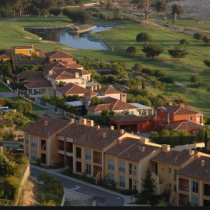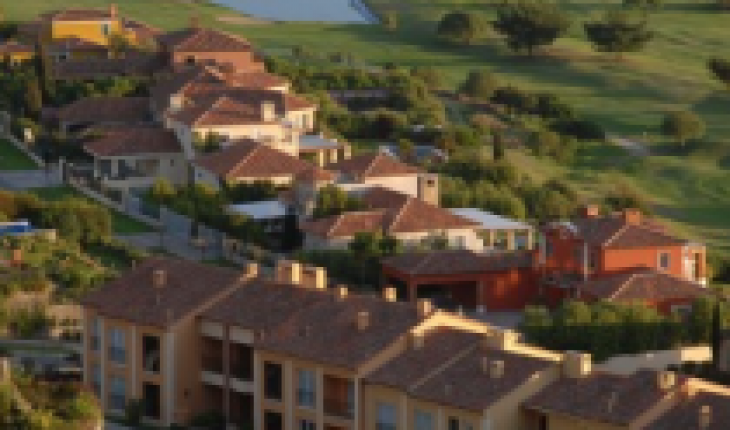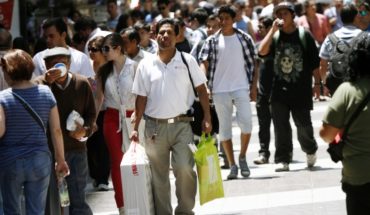
When the Supreme Court, in March this year, unanimously sentenced that “everyone, because of his dignity as such, has the human right of access to safe water, on an equal footing and non-discrimination” and provided for an obligation on the State to provide at least 100 litres of water per day and per person to the inhabitants of the communes of Petorca , Cabildo and La Ligua, did not take into account the situation of the town of Quintay, in the province of Casablanca. If in Petorca its inhabitants were living with less than 50 liters per day, in Quintay the situation is even more dramatic, with days when there is no liter to count: there is simply no drinking water. And when there is, it comes contaminated…
In the same place, the neighbors of the Santa Augusta resort – where one of the best golf courses in South America is located, which has three artificial freshwater pools for irrigation – the same is not the case. The different companies that make up the Inmobiliaria Santa Augusta own 99% of the existing water use rights in the area.
The situation of the inhabitants of Quintay lies at the end of inequality: at the poorest end. In order to try to curb the real estate expansion of Santa Augusta, which is at the other end, and which obtained authorization to build two new real estate megaprojects at that resort, which would further affect the availability of water, the community looks forward to the Supreme Court’s ruling, which analyzed this background through appeal, so that it can become a reality – also for them – that sustained in Petorca’s ruling , that “everyone, because of his dignity as such, has the human right to drinking water”.
Not even for a cup of tea
In Chile, the human right to water is not guaranteed under any standard, even though the United Nations explicitly recognized, and more than 10 years ago, that clean drinking water and sanitation are “essential to live worthily, and a precondition for the realization of other human rights”.
Despite this recognition, which even led the United Nations Special Rapporteur on Human Rights to Water and Sanitation, Leo Heller, to categorically assert that the “Chilean Government does not fulfil its international human rights obligations if it prioritizes economic development projects on human rights to water and health”, the situation in Quintay quietly becomes the demonstration of the opposite.
“Don’t have for a cup of tea. We don’t have drinking water for a hot drink, we don’t have enough water to wash our clothes or bathe.” Alejandra Porras, secretary of the Junta de Vecinos de Quintay, who together with other leaders, with the support of the Committee for the Defense of the Historical and Cultural Heritage of Viña del Mar, are giving the fight to make the human right to drinking water a reality in her community, she stresses that in her words there is no glimpse of exaggeration. “It’s sad, it’s grief, it’s anger and helpless,” he adds.
Quintay’s neighbors have been suffering several years ago from an environmental crisis that in the last three years has reached a deadline. Community members as far as 2018, in commenting on the Casablanca Community Regulatory Plan Project, warned that the danger of a water crisis of magnitudes was unrepressible, but they were not heard. At the time, they needed to see that the most complex situation was observed in the summer season, where there is an increase in the floating population of up to 300%, generating greater demand for human consumption services and hygienic services, causing a desupply in quintay’s population.
“We’ve been running out of water for a long time, but everything gets worse every day. It’s not just in the summers anymore. Those with resources can buy bottled water, but they can’t do it all the time either. And, along with this, that you can’t even have drinking water to brush your teeth, you add the economic problem by suspending tourist activities because of the theme of the pandemic,” says Alejandra.
Monopoly on water rights
According to the Supplementary Environmental Report, one of the factors consumed by groundwater is that of monoculture, pine and eucalyptus plantations, in the surrounding area and valleys surrounding the sources of the resource and streams that provide water to Quintay. In section 4.3.2 of that report confirms that “the recent drought has affected the productivity of nappa fed by the El Jote area, to which afforestation can be added with eucalyptus that significantly alters the specific productivity of its basin”.
In addition, the community has initiated a judicialization process, with the submission of protective remedies in which they have detailed that, together with the problem of monocultures, the great cause of the drought of the El Jote estic is the Santa Augusta Condo, which, in addition to receiving a significant number of people, has a golf course – the largest in South America – for which it requires 30 liters of water per second to cover the need for irrigation, which highlights the strong impact of a real estate project of proportions in an area where water balance is already strongly unbalanced.
According to photographic archives dating back to January 2020 and incorporated into the remedies before the court, “it can be observed that the El Jote esther is virtually dry and that it is extremely likely that this is a consequence of the illegal and arbitrary intervention of Santa Augusta”, since it has practically a monopoly on water use rights in the area.
Gabriel Muñoz, community attorney on behalf of the Pro-Defense Committee, explains that Santa Augusta not only owns virtually all the water use rights of the El Jote estuary, with which the population was historically nourished by water and is now dry, but also has the water rights of the Casablanca estuary, bringing together 99% of the water use rights, of a consuntive nature, that is, that they are consumed and are not returned to the riverbed and aquifers.
Just as the El Jote este is seized, the use of the water resources of the Santa Augusta complex would also be affecting the Tunquén Wetland, Nature Sanctuary, which is nourished by the waters of the Casablanca estero.
As recorded in a letter filed with the Supreme Court in 2020, “the Tunquén Wetland, declared a Nature Sanctuary by Decree No. 75 dated October 10, 2014, is currently in a limit situation. The amount of water you have is well below the levels needed to maintain your ecological balance. At the end of last November, residents of the sector approached the wetland and found that countless fish were dead, out of the water. (…) What happened in the Tunquén Wetland is closely related to what happens in the Estero de Casablanca and the real estate activity (of Santa Augusta) that, to be deployed, extracts water resources from the same Casablanca area”.
-How were they made of all that property?
-Since the late 1980s, in dictatorship, and then in the 1990s, in democracy, all rights have been awarded. More importantly, St. Augusta in 2001 even opposed being granted water rights to the community, for the damage it would cause to private investment. And how did they do it? Through concentrating water rights, in the form of a waterfall, in their different legal personalities.
Under the concept of the legal theory of the “corporate veil”, through which it is allowed to enter the fabric of a company (or groups of companies) and thus prevent it from hiding its responsibilities in a swarm of companies, it is, as the lawyer Gabriel Muñoz explains, undoubtedly a holding company of related companies that acquired rights through the legal personalities of the Santa Augusta Real Estate Society, the Condo and the Santa Augusta de Quintay Golf Course, by Hotelera Santa Augusta S.A. and/or also Costa Quintay I and II, legal entities that have the same legal representative, Francisco Javier Sepúlveda Donato.
The paradox: there are more rights granted than water available
The recognition of water as a right in the Water Code has been frozen 10 years ago in Congress, for containing the phrase: “Access to safe water and sanitation is an essential and indispensable human right that must be guaranteed by the State”. The problems have always been the same: that the amendments would violate the right to property.
While there is sufficient consensus that the water problem should be solved in the new Magna Carta, the constitutional issue was recently discussed by the current Congress and in full force of the Constitution of ’80. To get to the voting station to open the constitutional debate on the waters, it took 12 years. 29 votes were required in favor in the same Senate that approved the first and second withdrawals of the 10% of VET funds. But Senators Allamand, Harboe, Kast, Prohens, Pugh and Senator Von Baer did not vote; and voted right against Senators Aravena, Ebensperger and Van Rysselberghe, as well as Senators Coloma, Castro, Durana, García-Huidrobro, García, Moreira, Ossandón, Sandoval and Pérez. And the process failed.
In the experts’ view, the clearest example of how Chile’s water management model gives its allocation in absolute terms to the market is given in that paradox that in order to supply water to scarce locations, the State must buy it from those deprived who largely received it for free from the State itself. That is what happens today: the State buys, through the emergency funds of onemi and regional governments, cistern trucks to distribute water.
The Valparaiso Region, to which Quintay belongs, is a good example of this: water rights have been granted in this region more than seven times over existing water.
Contaminated water
Along with water scarcity, the APR (Rural Drinking Water) committee has been supplying the Quintay community with water that is not drinkable for years. “You check it every time you put water together. The water is brown, it is salobre, and sometimes it comes with a bad smell. I have a son under two years old and I was recently bathing him when the water started putting on coffee and I had to finish bathing him like this. Then it started with a skin allergy. That’s happened to several Quintay moms, it stings your body, your head…” says Alejandra Porras.
For situations like this, the community that has very limited resources also raised money and hired a particular study to analyze the waters – studies in which neither the municipality nor St. Augusta participated – and the result was lapidary.
Water showed that different chemical levels exceeded by up to 300% the legal maximum stipulated by health agencies. The maximum iron was found to triple, and more than double manganese, nitrates and dissolved solids, among other chemicals. According to the analysis, recurrent and indiscriminate intake of these chemicals can affect the nervous system, leading to motor disturbances, diseases of cardiovascular origin and even death.
With this data, they filed a first appeal against Quintay’s APR, the Seremi de Salud and the real estate, since the water for Quintay’s neighbours’ consumption was contaminated. A second appeal was brought against the Municipality of Casablanca, in order for the municipality to provide sufficient pollution-free water in the ponds provided for this purpose. The latter was joined to the previous appeal as the same constitutional guarantees and both were welcomed on 22 May 2020 by the Court of Appeals of Valparaiso.
In the ruling, Quintay’s APR Committee was ordered to perform in the shortest period, which could not exceed six months from the date of the failure, the installation of Iron and Manganese Filter and the Reverse Osmosis Plant that would allow it to obtain 400 thousand liters of water per day. The Committee was also ordered, within the prescribed period, irrespective of the installation of the works referred to, to provide drinking water to the quintay community, in line with the standard contained in Decree 735, Ministry of Health, which should be suitable for human consumption.
Finally, the Seremi de Salud de Valparaiso is ordered to monitor strict compliance with the audit obligations amid Decree 735 of the Ministry of Health.
“In November the deadline was met and Quintay’s community is still without water and the one it has is not drinkable as required by law, with all the consequences that this brings,” says Hernán Madariaga, spokesman for the Defence Committee.
Real estate megaprojects
One of the last actions against Santa Augusta was one of protection, brought before the Court of Appeals of Valparaiso and which was rejected for attributing to a wrong building permit the authorizations for the real estate company, in full knowledge of the water scarcity and the dramatic situation of the quintay community, to initiate an expansion through two megaprojects in the depressed area.
On the other hand, the letter – presented by Corporación Pro Defensa del Patrimonio Histórico y Cultural de Viña del Mar and the neighbors of the commune of Quintay – states, with regard to the Alto Quintay Project, that this is an illegal act, when granted by the Casablanca Works Directorate the building permit without having the Environmental Impact Study that will allow to evaluate how the real estate expansion will impact water consumption , a situation which, in the view of neighbours, directly affects the right to live in a pollution-free environment.
“The Alto Quintay Project poses a number of imminent risks to the area’s water resources. This entails, by the way, an impact of proportions on the town of Quintay and each and every one of its inhabitants, by characteriating the subsuntion to be made between the facts at the subject of the present action and Article 11(b)(c) and (e) of Law No. 19.300. Not having submitted the Alto Quintay project to an environmental impact assessment tool is not only legally reprehensible, but also from a legal point of view.”
After the appeal was rejected, the community raised an appeal to the Supreme Court, the allegations of which were made late last year, with the ruling agreeing.
“We hope that the ruling will be known in the coming weeks and that, ultimately, it will accept people’s arguments so that not only is the human right to water guaranteed, as in the 100-litre petorca ruling, but also that socio-environmental deterioration in the area will also be stopped,” says Quintay’s community lawyer , Gabriel Muñoz.





